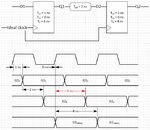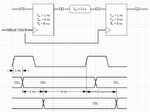sunidrak
Full Member level 1

- Joined
- Apr 12, 2012
- Messages
- 97
- Helped
- 2
- Reputation
- 4
- Reaction score
- 2
- Trophy points
- 1,288
- Location
- Bengaluru, India
- Activity points
- 1,738
Why the maximum frequency of operation of Sequential design doesn't depend upon Hold time of a fliflop ??
plz reply
plz reply



